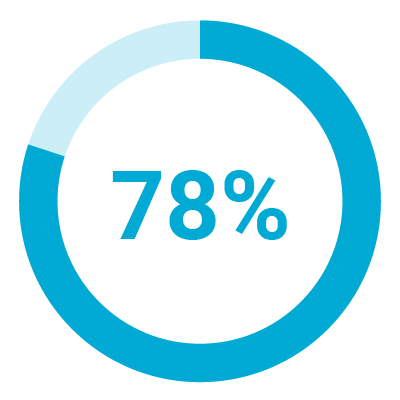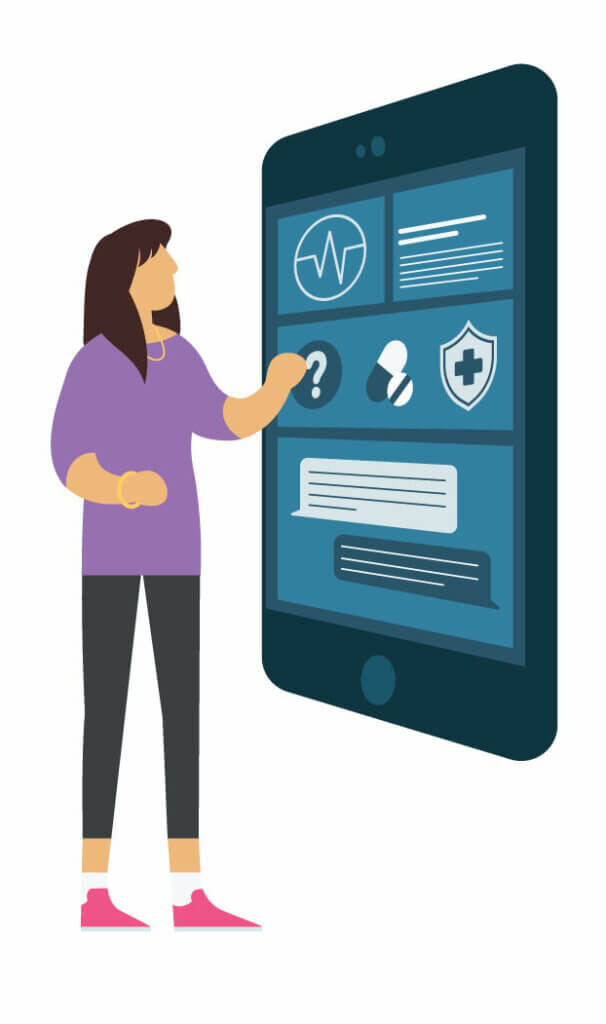
5 ways to empower the family caregiver
Nearly 80% of caregivers prioritize someone else’s health over their own. That means your plan can impact more members if you empower the family caregiver.
More than 20% of Americans are caregivers—about 53 million people. Yet there are few resources targeted specifically at family caregivers. In fact, caregivers report being in worse health compared to five years ago. Does your health plan want to impact more members? Target and empower the family caregiver.
In late 2021, Wellframe sponsored a research study of more than 300 health plan members. The goal of the study was to better understand member perspectives and identify the most urgent problems they need health plans to solve. The research showed that the way members feel about their own health and the healthcare system evolve based on age, health status, and healthcare experiences.
Why focus on family caregivers?
In our survey, we found that one family member often takes on the role of ‘care manager’ and healthcare advocate for everyone. This is true even for those without children—many adults are caregivers for another adult, such as a parent or spouse.
Family caregivers are the people calling doctors’ offices, scheduling appointments, and asking about insurance coverage. If your plan can empower the family caregiver with information and support, then you are supporting an entire family.

of parents and caregivers surveyed almost always prioritize the health of the person under their care above all else.
Challenges for family caregivers
Among those surveyed, proactive care management is often limited to children. This leads parents and caregivers to deprioritize their own health. Caregivers may pay less attention to their own needs, and potentially their partner’s needs, to focus on those in their care.
Parents in the survey also spoke to a lack of knowledge and transparency in healthcare—including understanding insurance coverage and benefits. Family caregivers don’t have extra time to iron out fine details or search for reliable health information online. Here are 5 ways your health plan can empower the family caregiver and earn their trust.
1. Close healthcare knowledge gaps
One of the most pressing issues members face are gaps in their healthcare knowledge. Members view their health needs—and the health needs of their families—in a specific way. Most members don’t reassess their needs until they experience a health event. And by then, they’re in urgent need of accurate and relevant healthcare and benefits information.
Your health plan can offer clarity so family caregivers know where and how to find information quickly, on the channel that suits them. For example, Wellframe users have access to a member resource center with clinically reviewed healthcare information. Each user also has a member benefits center to access benefits information, including FSA or HSA balance.
–Survey respondentIt can be really hard to get a hold of a healthcare professional. So usually I toss my concern into [an online] forum and I say I’m having these symptoms, has anyone had these symptoms, what were your next steps?

2. Coordinate individual and family care
Navigating the healthcare system requires many separate interactions. From scheduling to appointments to referrals, plus all the questions in-between, it’s easy to see why members can get overwhelmed.
More than 20% of surveyed members said that “not knowing where to start” was a challenge in keeping healthy. So how can your health plan help guide your members? Make it easy for them to find the right information at the right time.
78% of the members we surveyed said it would be helpful to access their health data in one place. Digital health management solutions like Wellframe centralize member data and relevant healthcare information.
3. Improve cost transparency
1 in 4 people we surveyed said their healthcare costs are too expensive—and a barrier to keeping healthy. The unknown and potentially high costs of healthcare keep members from accessing necessary care. These delays in care can lead to worsening conditions and more costly treatment down the line.
As a health plan, you can give members the coverage information they need to make informed medical decisions. Doing so gives caregivers the agency to estimate their own budgets, track their family’s claims, and understand their copays and deductibles. Digital customer service solutions can make it easier for members to share their concerns and discuss their medical bills with care advocates.

4. Support healthcare literacy and cultural competency
More than 20% of our survey respondents reported negative experiences with medical providers as a healthcare barrier. Plan members may struggle to find providers that they trust, or that can provide them holistic care based on the member’s age, race, first language, or other identities.
Health plan staff can start by acknowledging members’ unique health and personal needs. One-to-one communication is the key to establishing trust with your members. If your members trust you, they’ll be more likely to stay loyal to your health plan and stay on track with their care plan.
Digital health management solutions can also help your health plan deliver relevant, digestible information to your members. With Wellframe, members have access to clinically reviewed articles about various health conditions and wellness recommendations. Members can also view their benefits information—including FSA and HSA balance—at any time. This ensures family caregivers can refer back to important data and remind themselves of next steps.
–Survey respondentThe first thing you need to do when you have chemotherapy or cancer is have a zoom meeting with a professional and maybe a social worker… explaining to members how the process works, what they can expect, what are their concerns, what are their questions, a list of resources that they can send you… That’s the first thing that should be done, and they don’t do it.
5. Offer a better member experience

How do you know if your members trust your health plan? More than half of survey respondents said they were satisfied with their health insurance. However, when it came to making healthcare decisions, only 0.06% placed a high level of trust in their insurance company.
To improve member rapport, health plans have to be more accountable for the member experience. This means being proactive and anticipating the needs of your members and their families. Your plan can empower the family caregiver and improve member experience by giving them the tools to track their health plan interactions, build relationships with care managers, and ask questions as they come up.

Do you want to know how your health plan can improve member experiences holistically?
Visit our article, “Deliver a better member experience with Advocacy” to learn more about what members expect from their health plan experiences.